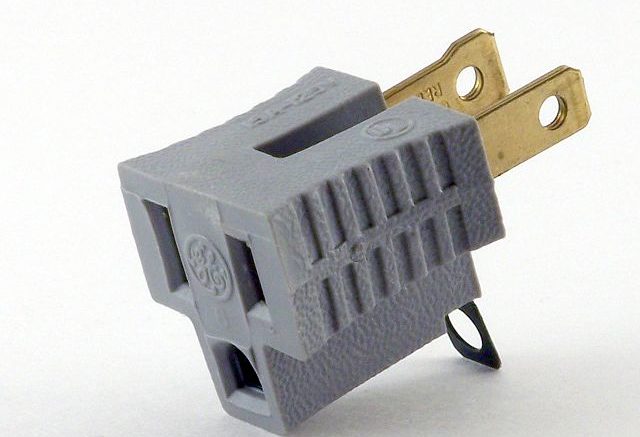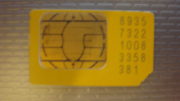This could be the most dangerous thing in your house. OK, it probably isn’t, especially if you keep matches or firearms in the home. But hey, it’s a good headline. But let’s not dismiss the problem. Using electrical equipment the wrong way can create a fire hazard. And, as far as dangerous things go, that little chunk of plastic at the top of this article is surprisingly high on the list.
Don’t dismiss the danger of the ground lift
Yes, there are other dangerous things in your home. That doesn’t mean you should close your eyes to the problems created by the ground lifter, also called a NEMA cheater. This little device, usually sold for under a dollar, lets you put a three-prong plug into a two-prong outlet. Most places have three pronged outlets but some extension cords don’t. So you use this little doo-hickey, and go on about your way.
Except for one thing: that three-prong plug is there for a reason. At some point, some engineer determined that the thing you’re using needed to be grounded. Not “should be grounded,” he or she said “needed to be grounded.” Adding a grounding pin (the correct term for that third prong) may only cost a penny to do but companies aren’t going to do it unless they need to. So a three-prong plug is there for a reason. If you don’t properly ground the thing, it could stop functioning right, even to the point of catching fire (although that’s pretty rare, it does happen.)
Everything should be grounded, but some stuff isn’t
Proper grounding allows for excess electricity to have somewhere to go. Without grounding, there’s a higher risk that a failing appliance might start a fire. So why is it that there are things like lamps that aren’t grounded? Generally when you see something that isn’t grounded, it has some sort of fail-safe within it. A lamp is a good example of this. The light bulb just blows and breaks the circuit. This means that the danger is pretty minimal.
It’s also possible that the draw isn’t that big and therefore there isn’t too much danger. A cell phone charger draws five volts and up to two amps. That’s a very small amount of current so it’s not a problem. Having a two-prong plug helps keep the charger fairly small.
Is there a legitimate use for this product?
As a way to make things work in the short term, a ground lift is just fine, especially if you actually use it as intended. Ground lifts are used in audio equipment to help if there’s a buzz in the line caused by noisy power. Generally, though, that’s done with something called a “direct box” which accomplishes the same thing but lets the equipment stay grounded without passing the ground into the cables.
Using a ground lift properly
The proper way to use a ground lifter is to run ground wire from that metal hoop to the nearest ground source. This could be the junction box in the wall or a cold water pipe. Or it could be the actual ground, you know, the dirt. If you’re not doing that, you’re doing it wrong.
For a quick fix, a ground lifter is probably not going to kill you, but if you plan on using one for a long time, do yourself a favor: use it right.
Another way is to use the center screw on your outlet plate to have that loop contact the case of the outlet box, which in older house was metal and was grounded, but then again, some were not grounded, and in today’s houses it almost certainly is not a grounded metal box. If using this then test with an 3-prong outlet wiring tester.
There so much more, but I’ll only say that this is why the GFCI device on sockets near water were invented, if any current does not come back through the correct path in the GFCI circuit it will trip in time to hopefully save your life. This circuit will also protect you if some dummy put a ground lifter on a two prong extension code. If any current does not go back through the return, white, wire it will trip.
If there is no such outlet in your work shop or on your outside outlets you should build a box with a 30-Amp GFCI socket and a 30-Amp extension cord to use for outside projects. These are now available, does Solid Signal carry them? Or, the outlets in your workshop and outside walls should be changed to 30-Amp GFCI sockets – assuming you do not know the breaker value on that outlet.
See:
https://www.homedepot.com/b/Electrical-Electrical-Cords-Extension-Cords-GFCI-Plugs/Tower-Manufacturing-Corporation/N-5yc1vZcgerZ6n7
Be sure it says that it is an in-line GFCI extension cord.





